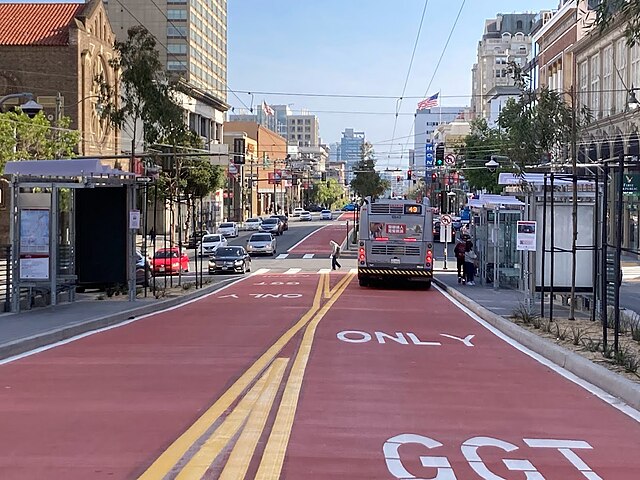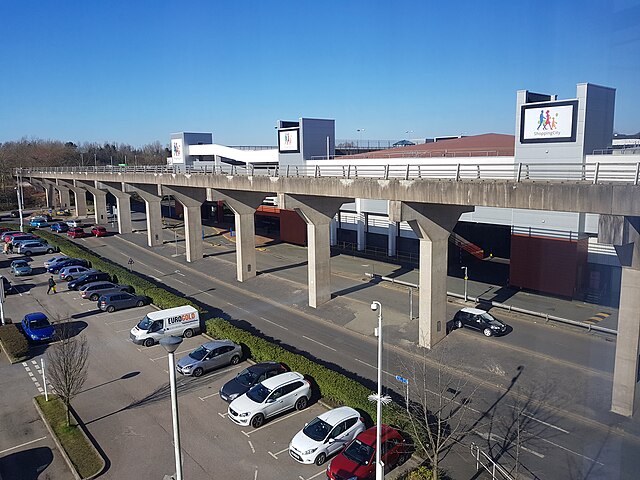The BRT Standard is an evaluation tool for bus rapid transit (BRT) corridors around the world, based on international best practices. The Standard establishes a common definition for BRT and identifies BRT best practices, as well as functioning as a scoring system to allow BRT corridors to be evaluated and recognized for their superior design and management aspects.
A TransJakarta bus on a dedicated bus lane, an exclusive right-of-way separated from heavy traffic.
Center of roadway or bus-only corridors keep buses away from the busy curbside, as seen here in San Francisco, USA.
BRT stations should be at level with the bus for quick and easy boarding, as seen here in Dar es Salaam, Tanzania.
Bus rapid transit (BRT), also referred to as a busway or transitway, is a bus-based public transport system designed to have much more capacity, reliability and other quality features than a conventional bus system. Typically, a BRT system includes roadways that are dedicated to buses, and gives priority to buses at intersections where buses may interact with other traffic; alongside design features to reduce delays caused by passengers boarding or leaving buses, or paying fares. BRT aims to combine the capacity and speed of a light rail transit (LRT) or mass rapid transit (MRT) system with the flexibility, lower cost and simplicity of a bus system.
TransJakarta in Jakarta, Indonesia. It is the longest BRT system in the world (251.2 km).
30 meter long Transmetro in Guatemala City for 300 passengers
Elevated busway at Runcorn Shopping City
The Rede Integrada de Transporte in Curitiba, Brazil, was opened in 1974. The RIT was inspired by the National Urban Transport Company of Peru.







